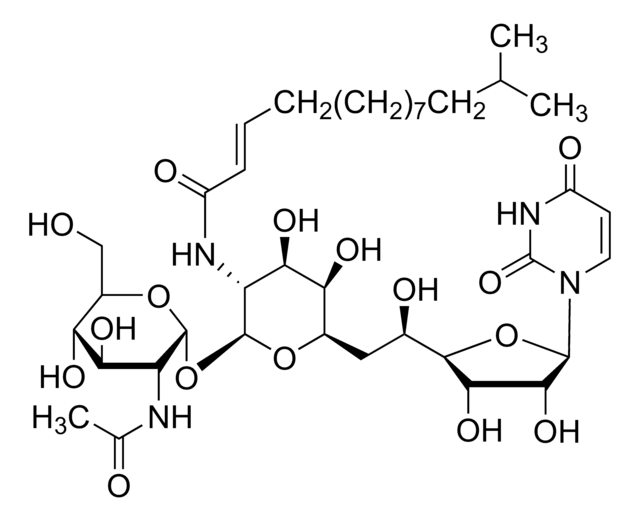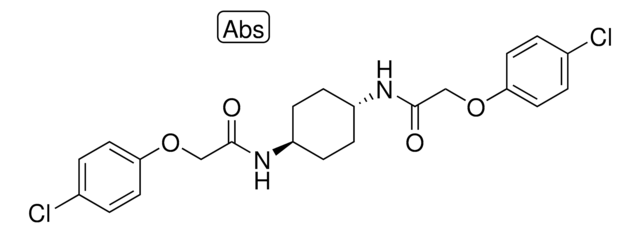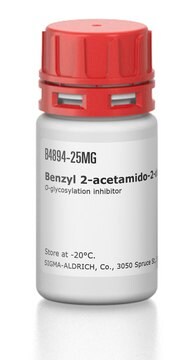654380
Tunicamycin
from Strepomyces lysosuperficus, ≥98% (A+B+C+D, HPLC), powder, N-acetylglucosamine transferase, Calbiochem
Sinónimos:
Tunicamycin, Streptomyces lysosuperficus
About This Item
Productos recomendados
product name
Tunicamycin, Streptomyces lysosuperficus,
description
Tunicamycin, Streptomyces lysosuperficus
Quality Level
assay
≥98% (A+B+C+D, HPLC)
form
powder
manufacturer/tradename
Calbiochem®
solubility
DMSO: 10 mg/mL
DMF: soluble
pyridine: soluble
shipped in
ambient
storage temp.
2-8°C
InChI
1S/C30H46N4O16/c1-11(2)5-4-6-16(38)32-19-23(43)20(40)14(47-29(19)50-28-18(31-12(3)36)22(42)21(41)15(10-35)48-28)9-13(37)26-24(44)25(45)27(49-26)34-8-7-17(39)33-30(34)46/h4,6-8,11,13-15,18-29,35,37,40-45H,5,9-10H2,1-3H3,(H,31,36)(H,32,38)(H,33,39,46)/b6-4+/t13?,14-,15-,18-,19-,20+,21-,22-,23-,24+,25-,26-,27-,28-,29-/m1/s1
InChI key
ZHSGGJXRNHWHRS-PEALBESXSA-N
General description
Biochem/physiol Actions
N-linked glycosylation
thrombin-induced Ca2+ mobilization in cells
Warning
Preparation Note
Reconstitution
Other Notes
Price, B.D., et al. 1992. J. Cell Physiol.152, 545.
Legal Information
signalword
Danger
hcodes
Hazard Classifications
Acute Tox. 1 Oral
Storage Class
6.1A - Combustible acute toxic Cat. 1 and 2 / very toxic hazardous materials
wgk_germany
WGK 3
flash_point_f
Not applicable
flash_point_c
Not applicable
Certificados de análisis (COA)
Busque Certificados de análisis (COA) introduciendo el número de lote del producto. Los números de lote se encuentran en la etiqueta del producto después de las palabras «Lot» o «Batch»
¿Ya tiene este producto?
Encuentre la documentación para los productos que ha comprado recientemente en la Biblioteca de documentos.
Los clientes también vieron
Nuestro equipo de científicos tiene experiencia en todas las áreas de investigación: Ciencias de la vida, Ciencia de los materiales, Síntesis química, Cromatografía, Analítica y muchas otras.
Póngase en contacto con el Servicio técnico








